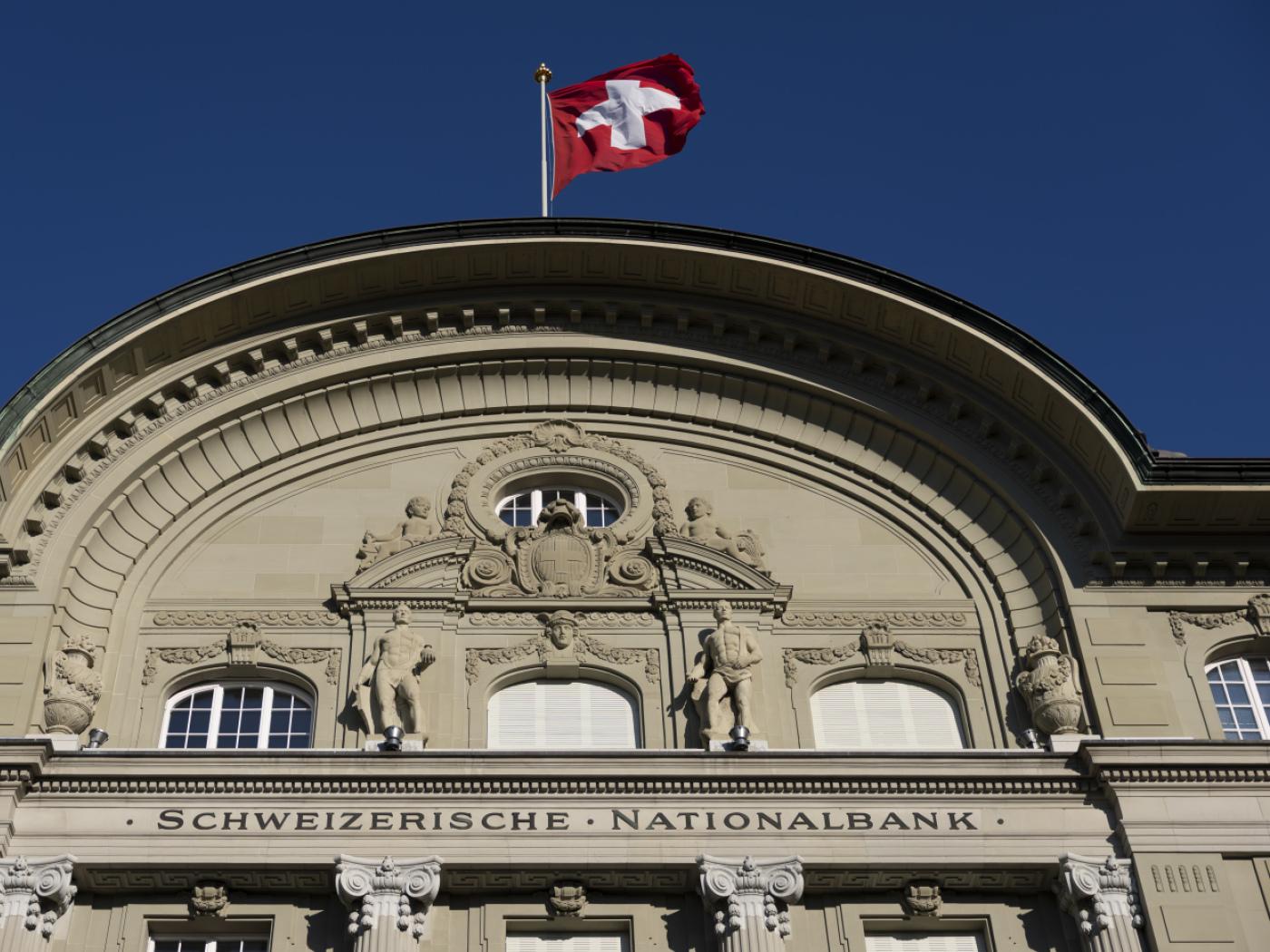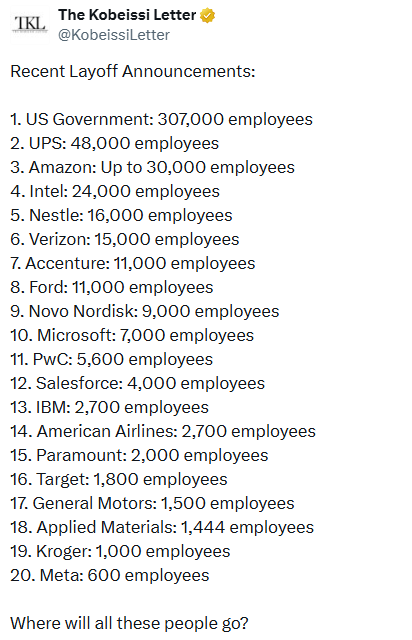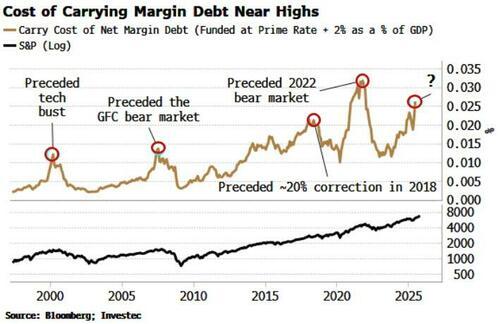Overview: Disappointing Apple and Amazon earnings news after the NASDAQ set a record high set the stage of a weaker bias in the Asia Pacific region today. China and Japan still posted gains, while local developments, like an unexpected drop in South Korea's industrial output, and Australia struggling to exit its yield-curve control, saw equities lose more than 1%. Europe's Stoxx 600 is paring this week's gains but is holding on to some for the fourth consecutive week. US futures are still trading heavily, but they will extend the advance for the fourth straight week, barring a rout today. The bond market sell-off in the Asia Pacific region saw the Australian 10-year yield jump nearly 30 bp, the most since March 2020 to over 2.00%, the highest yield in a year. New Zealand's benchmark is also the highest in a year. European bonds also remain under pressure. Peripherals are jumping led by Italy and Greece where yields have reached their highest in a year. Core yields are rising 5-6 bp. The US 10-year yield is firm at 1.61%, leaving it slightly lower on the week. As yields rise elsewhere, the leaders among the high-income countries in the cycle, Norway and New Zealand currencies, are underperforming today, and Nokkie is the weakest performer on the week. The greenback is trading firmer, as this week's losses against the other major currencies are pared. The liquid and freely accessible emerging market currencies are under pressure. The JP Morgan Emerging Market Currency Index is lower for the third consecutive session, and it is off for the seventh week of the past eight. Gold managed to close above $1800 on Monday but has been unable to repeat the feat amid choppy, consolidative action. The $1782 area offers important support. December WTI is firm around $83, but unless it can recapture $83.75, it will post its first weekly loss in 10 weeks. Copper is trading lower and is set for its first back-to-back weekly loss in five months.
Asia Pacific
The Reserve Bank of Australia is struggling to exit its yield curve control policy. Recall it intervened last Friday (for the first time since February) to ostensibly defend the targeted April 2024 yield. But by not showing its hand this week has spurred a dramatic adjustment in rates. The jump in rates makes shorting the currency more expensive. This week, the Aussie is the strongest of the major currencies, gaining nearly 1% against the greenback. The RBA meets next week, and policy will be clarified. Still, expect the RBA to push against the early rate hikes the market has discounted.
On the eve of the lower house election (October 31), Japan reported that industrial output fell for the third consecutive month in September. The 5.4% decline was twice as large as expected. The unemployment rate was unchanged at 2.8%, while the job-to-applicant ratio edged up. Tokyo reported a softer than expected October CPI, warning that deflationary forces have not entirely abated. The headline pace slowed to 0.1% year-over-year from 0.3%. Excluding fresh food and energy, prices fell 0.4% from a year ago after a 0.1% decline in September. The recent polls warn that the LDP could lose its majority in the lower chamber of the Diet but will likely maintain it with its coalition partner's help. Still, such a showing has two implications. First, many will look for a larger fiscal stimulus package, and second, the tenure of Prime Minister Kishida would be expected to be short.
The dollar is holding above yesterday's low against the yen near JPY113.25. A move back above JPY114.00 would lift the tone. This week's high was set on Tuesday near JPY114.30. Global rates, especially US Treasury yields, may be a more important driver at the start of next week, which features the FOMC meeting (tapering announcement) and US jobs data, than the Japanese election. The Australian dollar's upside momentum is stalling ahead of the 200-day moving average (~$0.7555). It posted a big outside up day yesterday, but there has been no follow-through. Initial support today is seen ahead of $0.7500. China's Evergrande made a coupon payment just ahead of the end of its 30-day grace period. Note that China's debt will be included in the FTSE Russell flagship index. The dollar appears to have forged a new range against the yuan over the past couple of weeks between around CNY6.38-CNY6.40. For the past week and a half or so, it has been alternating between advances and declines on a daily basis. Yesterday saw a slightly weaker dollar; today, a little stronger. Net-net, the greenback is set to post its first weekly rise against the yuan in five weeks. The PBOC again set the dollar's reference rate on the firm side of expectations (CNY6.3907 vs. CNY6.3892).
Europe
The eurozone reported a stronger than expected rise in October CPI, which after yesterday's upside surprise by Germany, and especially Spain, it was not a shocker. The headline rose by 0.8% to lift the year-over-year rate to 4.1% from 3.4%. The core rate edged up to 2.1% from 1.9%. Separately, the first estimate for the aggregate GDP came in at 2.2% (quarter-over-quarter), which would have matched the Q2 pace, but alas, it was revised down to 2.1%. As we discuss below, the US Q3 growth was 2% annualized.
ECB President Lagarde was clear that the market's pricing of a rate hike next year is not consistent with the central bank's guidance. However, when given the opportunity, she was reluctant to say the market was ahead of itself. It appears that is the fine line the executive board wanted her to tow. It is not so much about substance as framing the issue. There is great uncertainty about the inflation outlook, and there are varying views by thoughtful and informed people. Some critics did not think she was sufficiently forceful. Yet, in the recent past, critics complained about the hubris of central bankers. It seems like there is no winning. Some regional Fed Presidents like Bostic do not want to use the word transitory to characterize inflation. Still, Lagarde had no problem identifying energy, supply chain disruptions, and tax changes as spurring higher prices that may last well into next year.
The euro posted its biggest advance in five months yesterday, rising 2/3 of a percent against the dollar. There was marginal follow-through buying today, but it stalled at $1.1690, shy of the (50%) retracement of the leg lower than began in early September, found near $1.1715. It is finding support near the previous cap around $1.1650, where an option for around 455 mln euros will expire later today. A break of $1.1625 suggests the squeeze is over. Sterling is trading quietly in the upper end of yesterday's range and continues to struggle to secure a foothold above $1.3800. It remains mired in the range set on October 19 (~$1.3725-$1.3835). The BOE meets next week, and the (debt) market is anticipating a hike. Sterling is holding on to small gains this week, its fourth consecutive weekly advance.
America
US Q3 GDP was somewhat weaker than expected. The 2.0% annualized pace follows 6.7% in Q2 and 4.5% in Q1. Yet, it seems a bit like a B-movie, where the first loud sound you hear is not the real thing. The slower growth is not the beginning of a return to the status quo ante. Supply chain issues were a significant headwind. Consider the well-known problems in the auto sector. It took 2.7 percentage points off GDP. Consumption held up better than economists expected. The strong (almost 8% annualized rate) consumer services in the GDP report warns of an upside surprise to the 0.6% estimate for the September personal consumption expenditures. The GDP deflator softened (5.7% from 6.1%), while the quarterly core PCE deflator fell to 4.5% from 6.1%. That price pressures are elevated but not accelerating was seen in the CPI figures. The core rate rose at an annualized pace of 2.5% in Q3 after a 10% pace in Q2. If crypto in general or Bitcoin, in particular, is a hedge against inflation, the evidence is still lacking. On the one hand, there is not enough data for a rigorous statistical analysis; and on the other hand, crypto has not been around long enough to experience more than one cycle.
US President Biden will go to the G20 meeting and COP26 with little in hand besides some promises of Congressional action next week. He also may not be able to promise that the global tax reform, which the previous administration had blocked, will be approved by the Senate. In fact, polls suggest that the Democrats could lose both houses of Congress next November, and it must be assumed that foreign leaders are well aware of that. That would seem to limit the credibility of Biden's promises in their eyes.
The US reports September's personal income and consumption data and the final University of Michigan's October consumer confidence report. Next week, in addition to the FOMC meeting, the US October employment data is due. The early call is for the headline job growth to be around double the September gain. Canada's October employment data is also due at the end of next week. Today, Canada reports August GDP figures, which are too dated to have much impact, but it will help reinforce the sense that it has exited the soft patch that saw monthly GDP contract in three of the four months through July. Third-quarter GDP from Mexico is due today. The economy appears to have stagnated after growing 1.5% in Q2 (quarter-over-quarter). Lastly, note that Colombia is widely expected to lift its overnight lending rate by 25 bp to 2.25% today.
The Canadian dollar remains within the range set in the middle of the week when the Bank of Canada announced the end of its bond-buying and recognized that it may hike rates earlier. That range for the US dollar of roughly CAD1.2300 to CAD1.2430 is likely to persist well into next week. It is little changed in the European morning around CAD1.2340. There is an option for around $765 mln at CAD1.2345 that expires today and is set for a little more than $1 bln at CAD1.2300 that also rolls off. The dollar is surging against the Mexican peso. It is up about 0.55% now, which, if sustained, would be the biggest advance in three weeks. It is the fourth consecutive gain, the longest streak this month, to approach MXN20.51, the (50%) retracement objective of the down move from October 12. The next retracement is near MXN20.6050.
Full story here Are you the author? Previous post See more for Next post
Tags: #USD,Currency Movement,ECB,EMU,Featured,Japan,newsletter,RBA































